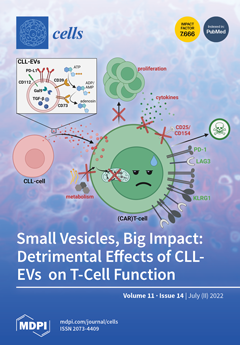Renewal of the intestinal epithelium is orchestrated by regenerative epithelial proliferation within crypts. Recent studies have shown that lysophosphatidic acid (LPA) can maintain intestinal epithelial renewal in vitro and conditional deletion of
Lpar5 (
Lpar5iKO) in mice ablates the intestinal epithelium
[...] Read more.
Renewal of the intestinal epithelium is orchestrated by regenerative epithelial proliferation within crypts. Recent studies have shown that lysophosphatidic acid (LPA) can maintain intestinal epithelial renewal in vitro and conditional deletion of
Lpar5 (
Lpar5iKO) in mice ablates the intestinal epithelium and increases morbidity. In contrast, constitutive
Lpar5 deletion (
Lpar5cKO) does not cause a defect in intestinal crypt regeneration. In this study, we investigated whether another LPA receptor (LPAR) compensates for constitutive loss of LPA
5 function to allow regeneration of intestinal epithelium. In
Lpar5cKO intestinal epithelial cells (IECs),
Lpar2 was upregulated and blocking LPA
2 function reduced proliferation and increased apoptosis of
Lpar5cKO IECs. Similar to
Lpar5cKO mice, the absence of
Lpar2 (
Lpar2−/−) resulted in upregulation of
Lpar5 in IECs, indicating that LPA
2 and LPA
5 reciprocally compensate for the loss of each other. Blocking LPA
2 in
Lpar5cKO enteroids reduced phosphorylation of Akt, indicating that LPA
2 maintains the growth of
Lpar5cKO enteroids through activation of the PI3K-Akt pathway. The present study provides evidence that loss of an LPAR can be compensated by another LPAR. This ability to compensate needs to be considered in studies aimed to define receptor functions or test the efficacy of a LPAR-targeting drug using genetically engineered animal models.
Full article






